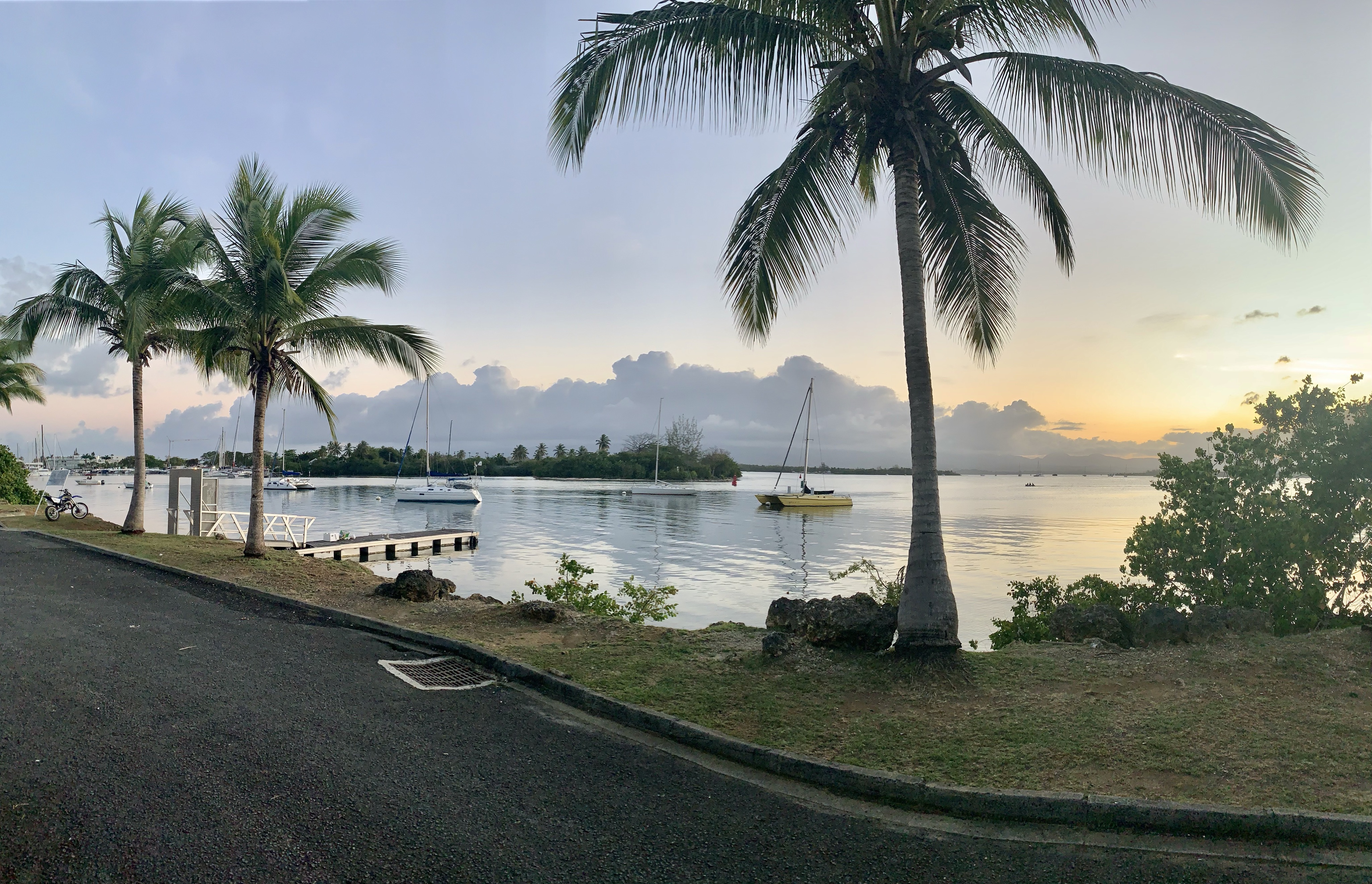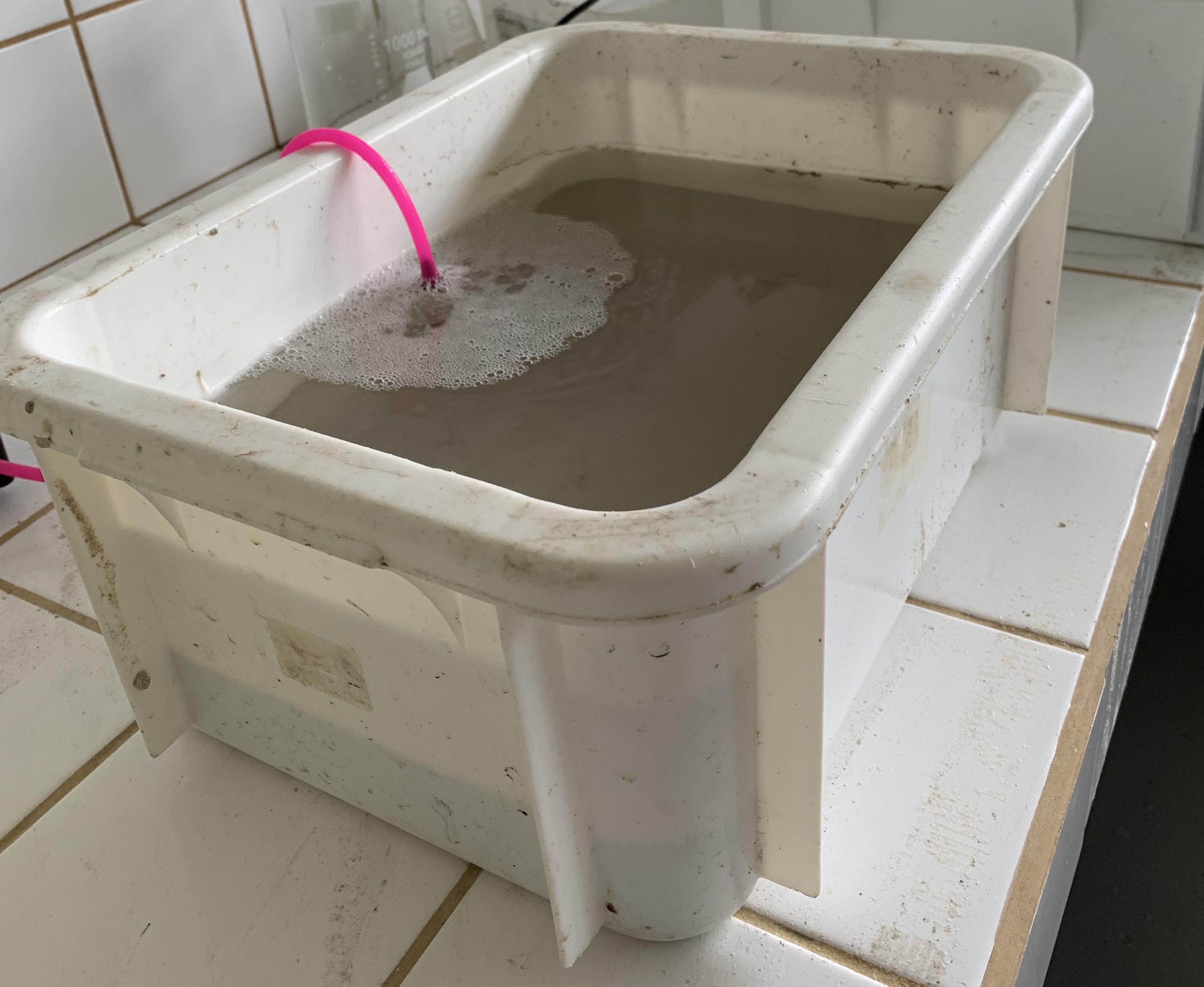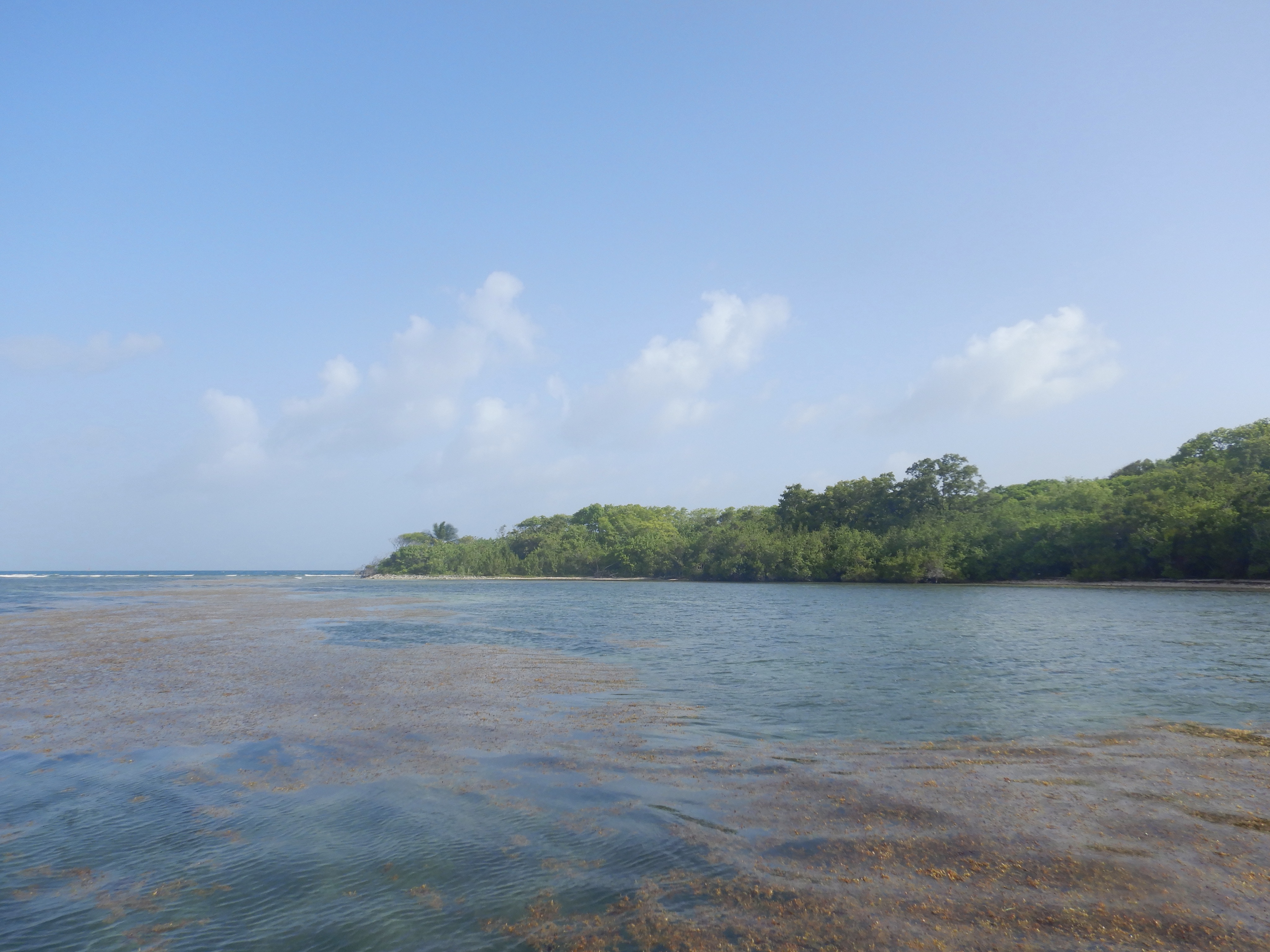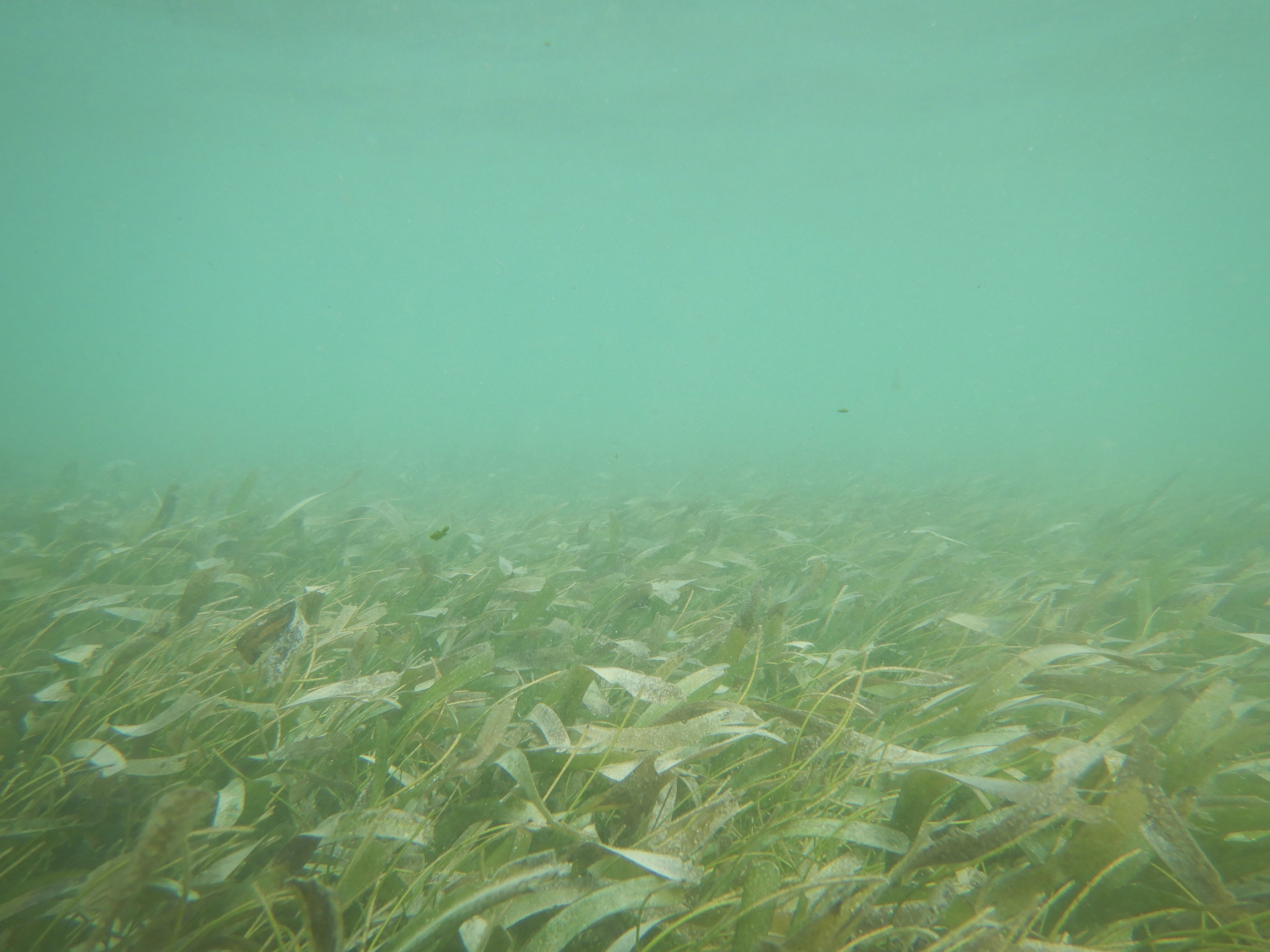Carlotta is becoming a lucinid whisperer
Carlotta went to Guadeloupe for some lucinid fieldwork and to learn from Prof. Olivier Gros.
In May 2022, Carlotta went to Guadeloupe for some lucinid fieldwork and to learn from Prof. Olivier Gros. They found Phacoides pectinatus in the magical mangroves close to Pointe-à-Pitre and Ctena imbricatula and Clathrolucina costata in seagrass beds of Thalassia testudinum in front of the Îlet à Cochons (pigs island).
Olivier trained Carlotta in how to separate the endosymbiotic bacteria from the gill tissue of different lucinid clams. Another skill that Olivier revealed to Carlotta was scanning electron microscopy (SEM) of Ctena imbricatula gills and Carlotta managed to capture inner gill structures with bacteriocytes bearing the endosymbionts!!
A great part of the trip to Guadeloupe was the re-infection of starved Ctena sp. individuals from the Pacific with Atlantic symbionts. For this, Olivier and Carlotta collected fresh sediment from the seagrass beds, which is rich in sulfide and potential sulfur-oxidising symbionts. In the lab, the clams dug themselves fast into the fresh sediment after 6 months without any other sources than filtered seawater and oxygen. Regularly, the sediment was changed and after almost three weeks, all 13 clams are alive and look way healthier than before their Guadeloupe-experience. Future analyses will hopefully reveal the uptake of new symbionts.
Carlotta is deeply thankful for the amazing time in Guadeloupe and the whole EcoEvoInt working group is looking forward to more collaboration time with Olivier.



